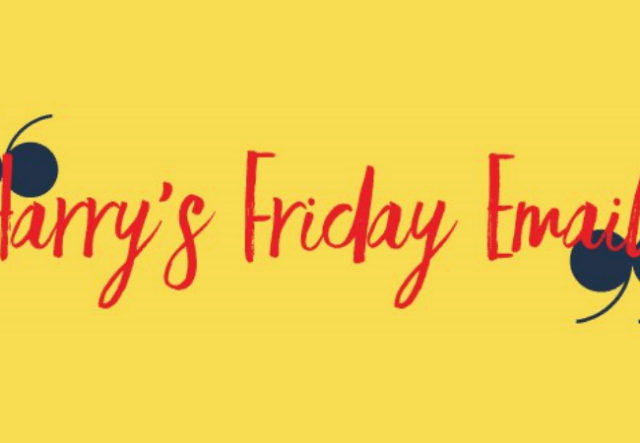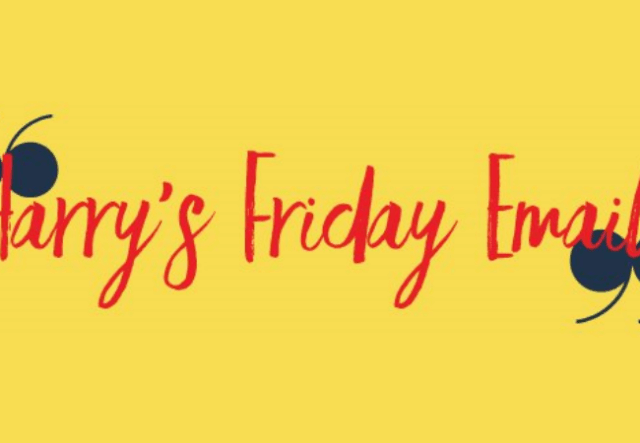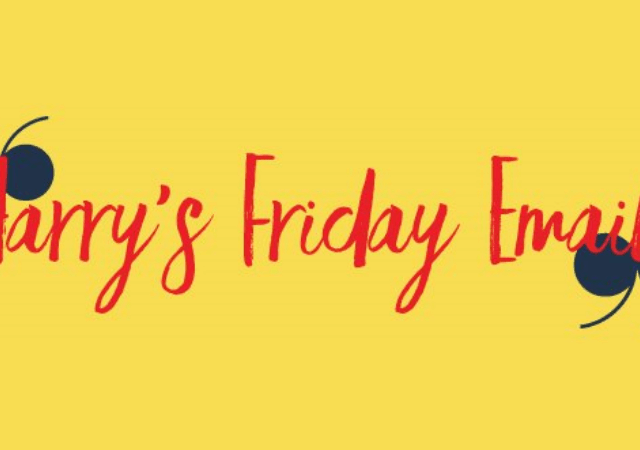Novels are necklaces. We talk a lot about the structure of a plot, and stress about it, and we’re right to talk and stress because plot matters so intensely and is so hard to get right.
But a book is just a chain of scenes, right? And yes, it’s a carefully sequenced chain, but each scene has its own story and its own structure.
Write with Jericho
Now, as you probably know, as part of our MAGA policy (Make Authors Great Again), we’re launching a new-and-improved version of our Write with Jericho course. Lesson One – Making Each Scene Purposeful – drops this week, led by my colleague (and psych thriller author), Becca Day. Next week, I’ll be teaching about building atmosphere in the scene. My colleagues (and authors) Sophie Flynn and Laura Starkey will also lead lessons.
The course is free to all Premium Members and the above link tells you more about how to participate. It also tells you what to do if you’re not.
So: take the course, listen to Becca, and think about scenes.
How one scene works
Now, I’m not going to repeat all the things that Becca speaks about, but what I do want to do is to take one short scene and see what it’s doing in terms of:
Opening with some questions
Answering those questions and replacing them with others
Deepening and complicating things
The scene – which I’ve chosen literally at random from Talking to the Dead – is one where Fiona arrives at the home of a man called Huw Fletcher. She suspects him of real wrong-doing, but knows he’s missing. She doesn’t have a way to get into the house … but she does have a strange kind of friend/enemy relationship with a bent copper, named Brian Penry.
The bold text is the scene itself. The italics are my comments. I’ve made some minor edits for the purposes of brevity.
Modern brick houses, double-glazed and comfortable. Speed bumps in the road and cars neat in their driveways.
The scene opens with several questions. One, what’s happened to Fletcher? Two, how does Fiona expect to get into a house when she has no means of entry and no search warrant? And three, what’s in the house?
Nothing remarkable about any of it, the house or the street, except that there’s an unloved dark blue Toyota Yaris parked up in front of Fletcher’s address, window wound down, and Brian Penry’s darkly haired arm beating time to some inaudible music.
I’m not surprised to see him. I don’t altogether know what the dark lines are that connect Rattigan, Fletcher and Penry – though I’ve got my ideas – but [I had ways to send signals to him and did what I could.]
I wasn’t sure that any of that would bring Penry, or what I’d do if it didn’t. But I don’t have to worry about that. Here he is.
Penry gets out of the Yaris and leans up against it, waiting for me.
OK, so a new question now jumps out at us: what is Brian Penry’s connection with any of this? As far as the reader’s been concerned, he’s under investigation for an entirely different crime. But notice also that one of the questions we started with – how does Fiona get into this house? – already feels different with Penry’s presence here.
‘Well, well, Detective Constable.’
‘Good morning, Mr Penry.’
‘The home of the mysterious Mr Fletcher.’
‘The mysterious and missing Mr Fletcher.’
Penry checks the road. No other cars. No other coppers. ‘No search warrant.’
‘Correct. We’re making preliminary enquiries about a reported missing person. If you have any information that might be related to the matter, I’d ask that you disclose it in full.’
This is fencing, and it feels like it. Neither party is saying what they actually think or feel. But notice that Penry is now making that question about access to the house explicit. He’s basically saying, “You can’t legally enter that house because you don’t have a search warrant.” And he’s right. That question is now centre stage.
‘No. No information, Detective Constable.’ But he gets a key out of his pocket. A brass Yale key, which he holds up twinkling in the half-sunlight. ‘I want you to know that I have nothing to do with any of this. I made some money that I should not have made. I did not report some of the things that I should have reported. I fucked up. But I didn’t fuck up the way that idiot fucked up.’ He equals a jab of the index finger equals Huw Fletcher.
I reach for the key.
He holds it away from me, polishes it in a handkerchief to remove prints and sweat, then holds it out. I take it.
Now both our starting questions get attention. Penry for the first time acknowledges that he is in some (still mysterious) way linked to Fletcher. That’s the first time two major story strands have been formally connected in the book. And the question about access – well, he has a key. Him wiping prints off the key emphasise the not-very-official nature of what’s happening.
‘Time to find out what kind of idiot you aren’t,’ I say.
Penry nods. I’m expecting him to move, but he doesn’t, just keeps leaning up against the Yaris and half smiling down at me.
‘You’re going in there alone?’
‘To begin with, yes. Since I am alone.’
‘You know, when I was a young officer, a wet-behind-the-ears DC, that’s what I’d have done too.’
‘Junior officers are required to use their initiative in confronting unforeseen situations,’ I agree. I don’t know why I start speaking like a textbook to Penry, of all people…
The access question is solved by the key, but that question is instantly replaced by this one: are you going in there alone? That’s partly a safety question (is it safe in there?), but it’s also a legality one. Fiona doesn’t have a warrant. Does she intend to break the law?
Penry says, ‘You’re like me. You know that? You’re like me and you’ll end up like me.’
‘Maybe.’
‘Not maybe. Definitely.’
‘Can you even play the piano?’
‘No. Not a single bloody note. Always thought I’d like to, but I get a brand-new piano in the house and I never touch it.’
‘That is like me,’ I nod. ‘That would be just like me.’
Penry is now saying, “Yes, you will go in there illegally and you’ll end up like me – a bent copper who’s about to be sent to prison.”
When Penry stole money, one of the things he bought with it was an upright piano, which Fiona saw earlier at his home. The non-playing of the piano shows how pointless the thefts were. Penry destroyed himself for no gain, and is telling Fiona that she’ll do the same. It’s not quite clear if Fiona even disagrees.
So now we have a new question – and one much bigger than those we started with – which is: can Fiona manage her future in a way that doesn’t destroy her? And, in fact, because we know she’s about to enter the house illegally, the question has edge. It looks like she is on the path to self-destruction.
His half-smile extends into a three-quarters one, … then vanishes. He gives me a half-salute, slides back into the Yaris and drives off, slowly because of the speed bumps.
So the Penry-related questions are closed off (for now). The questions about this house-entry loom large.
The street is empty and silent. The sunlight occupies the empty space like an invading army. There’s just me, a house and a key. My gun is in the car, but it can stay right where it is. Whatever’s in the house isn’t about to start a fight, or at least I hope it isn’t.
I approach the door, insert the key, turn the lock.
I feel a kind of amazement when the lock turns. It’s like turning the page in a fairy story and finding that the story continues exactly as before. At some point, this particular tale has to come to an end.
This is a pause, but it’s weaponised. The invading army, the gun, the fight – all those words add menace to this moment. In a somewhat metaphorical way, the story is telling us that things are starting to turn serious. The stakes are rising.
The house is . . . just a house. There are probably twenty other houses on the same street that are exactly like it, near as dammit. No corpses. No emaciated figures of runaway shipping managers chained to radiators. No weapons. No stashes of drugs. No heroin-injecting prostitutes or little girls with only half a head.
OK. So far, so nothing. But there’s no release of tension. Slightly the opposite. The reader knows that something’s about to happen – there’s been too much made of this house entry for there to be nothing inside.
I tiptoe round the house, shrinking from its accumulated silence. I’ve taken my jacket off, and wrap it round my hand whenever I touch handles or shift objects.
I don’t like being here. I think Brian Penry is right. I’ve got more of him in me than of, say, David Brydon [a very upright police officer, and Fiona’s first proper boyfriend]. I wish that weren’t true, but it is.
Another reminder that Fiona is acting illegally, and that her future is in doubt. That question feels even sharper now. Fiona’s two possible futures are personified: the upright Mr Brydon, and the self-destructive Mr Penry.
In the bedroom, there is a big double bed, neatly made with white sheets and a mauve duvet cover.
In the bathroom, just one toothbrush. All the toiletries are male.
In the living room, three fat black flies are buzzing against the windowpane. A dozen of their comrades lie dead beneath them.
More stillness. More waiting for whatever The Thing is that’s about to show its face. But also – those dead flies. A little drip of reminder about the darkness that lies here.
In the kitchen, I open cupboards and drawers, and in the place where tea towels and placemats are kept, there is also cash. Fifty-pound notes. Thick wodges of them. Held together with rubber bands. The drawer below holds bin liners and kitchen foil, and even more bundles of notes. These ones are stacked up against the back of the drawer, making multiple rows. A little paper wall of cash. With one finger, and still through my jacket, I riffle one of the bundles. Fifties all the way down.
Ah! Here’s the thing. That third question – what’s in the house? – is now fully answered. But that also means it’s instantly replaced by a “and what are the consequences?” type question.
I don’t like being here at all now. I don’t like being Brian Penry. I want to go back to plan A, which was to practise getting ready to be Dave Brydon’s new girlfriend. To experiment with my putative new citizenship of Planet Normal.
I close the drawer and leave the house. The lock clicks shut behind me. I find an old terracotta flowerpot in the garden and stow Penry’s key underneath it.
OK, so we’re done with questions about the house. The questions about Fletcher remain, but now he’s not just missing. He’s a missing person with tons of surely illicit cash in his home. But what about Fiona? She shouldn’t have gone in there. She did. She found something which her less rule-breaking colleagues surely need to know about.
Back in my car, I find that I’m sweating and cold at the same time. I try to go back to that feeling I had on the print-room stairs. That feeling of being somewhere close to love and happiness. Living next door to the sunshine twins. I can’t find them anywhere now. When I stamp my legs, I can hardly feel my feet when they hit the floor.
I call the Newport police station. It’s all I can do, and I feel relieved when the silence is ended.
OK, the scene – which has been low-key emotionally – ends with some big emotions. Fiona is a long way now from ‘the sunshine twins’. The darkness of these crimes is enclosing her.
But she does at least call her police colleagues. She’s doing something to restore legal / official order to affairs.
But notice what’s happened to our opening questions. They were:
What’s happened to Fletcher?
How does Fiona expect to get into the house?
What’s in the house?
The first of those questions is still a big Don’t Know – but the question has become deeper and darker as a result of what’s just happened.
Question 2 has been answered, but it’s been replaced a much bigger and more interesting one: “Will Fiona destroy herself the same way as Penry did?”
Question 3 has been answered, but it’s been replaced by a “What the hell is going on with Fletcher?”
And notice two more things before we finish:
The Fiona / Penry relationship has just become deeper and more complicated. In this little scene, they found a kind of kinship, but based around Fiona’s capacity for self-destruction. That’s interesting – but we also want to know how that strand plays out in the future.
The stakes have risen. Although this scene was very quiet, there was an invading army, twelve corpses (only flies yes, but still symbols of death), and Fiona seems close to collapse.
The story after this scene ends is more complicated, darker and deeper than it was before And this was a short scene. And nothing much actually happened: a man gave a woman a key. And she found some cash in a drawer. That’s not much by way of actual action.
Reflections
A lot of writing advice is generated because people have to generate something. They have a blogpost to write, or an email to send, or a course module to fill,
But the only advice worth anything is advice that helps you solve problems in your writing. So when I read or listen to advice, I always ask: does this actually describe what I personally do when I’m writing well? Does this advice actually generate insights that will help me when I get stuck?
And, without talking about everything that Becca discusses, I have to say that, yes, her insights described exactly what was happening in this scene. Not just that, but it was surprising to me to see how mobile the scene-questions were. How they changed, not even from page to page, but every few paragraphs. That’s presumably why good writing feels alive, mobile and unpredictable, and bad writing feels stagey, dull and dead.
Anyhow: I hope you enjoy the Write with Jericho course. More info below if you need it.
***
FEEDBACK FRIDAY
No feedback from me this week. Becca takes over. Her Lesson One video (available to Premium Members only) contains an assignment to do and upload to Townhouse. In addition to feedback from your peers, there might even be a chance of getting feedback from Becca. If you aren\'t a Premium Member, then you can sign up, and join the course, immediately and for free.
***
That’s it from me.
Til soon.
Harry







